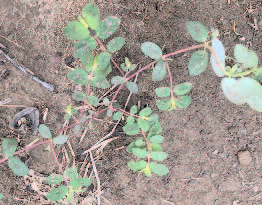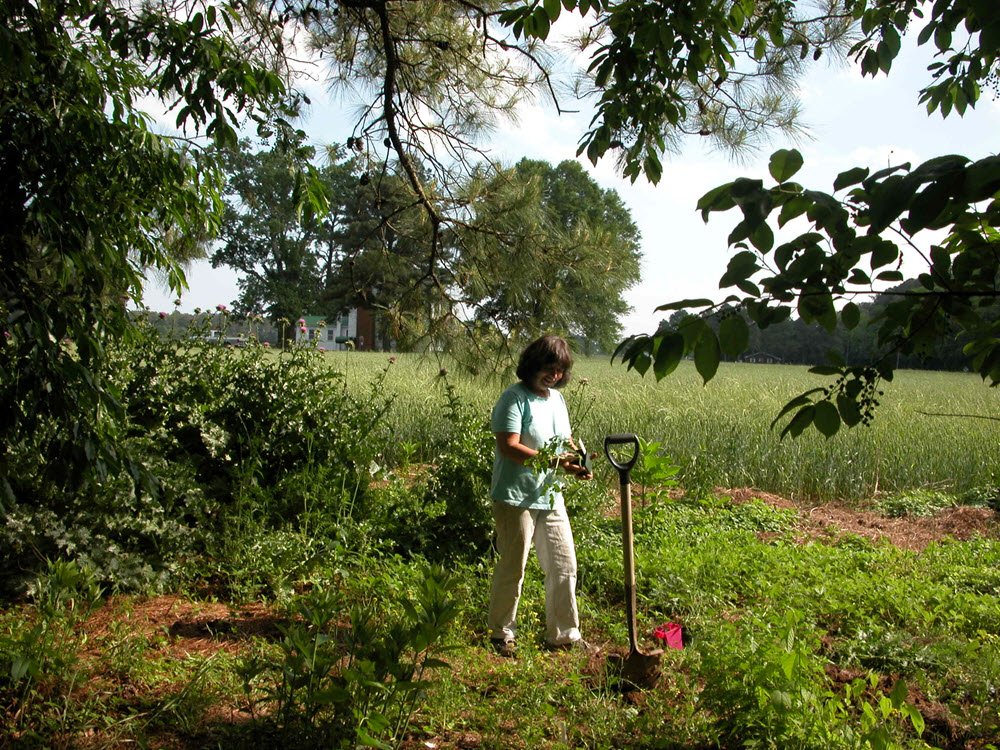
My Blog
My thoughts and Commentary on Plants and Herbs
Cleavers, Bedstraw – February 5, 2021
((Galium aparine) - Madder Family – Rubiaceae
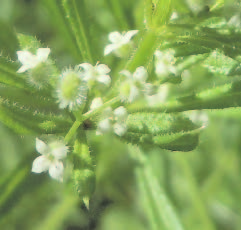 The arrival of spring brings with it a sudden burst of growth from the plant world. A common herb that catches your attention is cleavers, also known as bedstraw, an introduced annual. The herb literally reaches out and grabs onto you as you pass by. Leaves and stems are both covered in small, fibrous hairs with tiny hooks on the end, enabling it to stick to clothing and other objects. Cleavers is also one of the few wild greens that has leaves in whorls with six to eight slender leaves forming a circle around the square stem. Tiny, white flowers with four petals appear in the spring in the leaf axils followed by tiny, bristly fruits.
The arrival of spring brings with it a sudden burst of growth from the plant world. A common herb that catches your attention is cleavers, also known as bedstraw, an introduced annual. The herb literally reaches out and grabs onto you as you pass by. Leaves and stems are both covered in small, fibrous hairs with tiny hooks on the end, enabling it to stick to clothing and other objects. Cleavers is also one of the few wild greens that has leaves in whorls with six to eight slender leaves forming a circle around the square stem. Tiny, white flowers with four petals appear in the spring in the leaf axils followed by tiny, bristly fruits.
Leaves and stems of cleavers are both edible and medicinal. The chopped leaves and stems can be made into a tea or cooked as greens. Fruits have also been used by roasting them and making a coffee-like beverage.
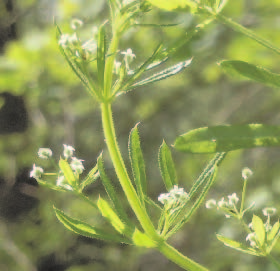 Cleavers is best used fresh. Chopping them in a juicer, blender, or grinder is the easiest way to prepare them. They can then be tinctured using alcohol or vinegar. Cleavers vinegar can be added to salads or as a marinade for vegetables.
Cleavers is best used fresh. Chopping them in a juicer, blender, or grinder is the easiest way to prepare them. They can then be tinctured using alcohol or vinegar. Cleavers vinegar can be added to salads or as a marinade for vegetables.
Cleavers has a long history of use as a medicinal herb. It contains plant acids, coumarins, iridoids, and tannins (Hoffman, 2003). As a diuretic it is useful for bladder and kidney inflammation and edema. Cleavers is a cooling herb and is useful for hot, stagnant conditions. As a juice or poultice, it can be used for burns, including sunburns. Cleavers moves lymph and is therefore beneficial for swollen lymph glands, including tonsils, armpits, breasts, and groin (Herbs with Rosalee).
References:
Herbs with Rosalee: https://www.herbalremediesadvice.org/cleavers-herb.html
Hoffman, D. (2003). Medical herbalism: The science and practice of herbal medicine. Rochester, VT: Healing Arts Press.
Green Smoothie with Cleavers
a tasty and nourishing spring tonic
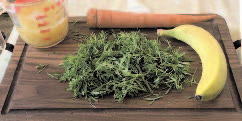 2 cups chopped cleavers
2 cups chopped cleavers
1 frozen banana
1 cup pineapple or orange juice
1 carrot
Place the herbs in a blender and blend until smooth. Serve immediately.
Vickie Shufer
Groundnuts – January 15, 2021
(Apios Americana) - Pea Family (Fabaceae)
Whiteman say to the redman “Is this the Promised Land?” Groundnuts and wild rice and turkey in the hand!
(Jim Duke, Herbalbum, 1985)
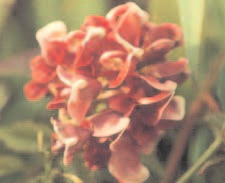 Not a nut at all, groundnuts are actually legumes and grow as a climbing vine that twines around the stems of trees, shrubs, and other plants in the area. A native herbaceous vine, groundnuts grow along the edges of banks, streams, and moist meadows and thickets. The narrow, egg-shaped leaves are compound with five to seven leaflets that are pointed at the tip with smooth margins.
Not a nut at all, groundnuts are actually legumes and grow as a climbing vine that twines around the stems of trees, shrubs, and other plants in the area. A native herbaceous vine, groundnuts grow along the edges of banks, streams, and moist meadows and thickets. The narrow, egg-shaped leaves are compound with five to seven leaflets that are pointed at the tip with smooth margins.
Most of the year, the groundnut just blends in with the vegetation around it until it blooms in mid-summer. At that time, clusters of maroon-colored, peashaped flowers develop in the leaf axils, followed by long, green pods with edible seeds that look and taste like peas.
I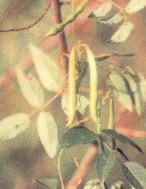 t is the underground nut-like tuber that gives it the name groundnut. The tubers grow in a long string just below the surface of the soil. Traditionally, they have been an important food for the indigenous people in those areas where it grows. American Indians introduced the groundnuts to the Pilgrims, which may have been responsible for their survival through the first winters. Groundnuts are used as a potato substitute and contain three times as much protein as potatoes. They have an earthy, potato-like flavor. Locating groundnuts is best done in the summer months when they are in bloom. After the frost, the vines die back and drop their leaves. At that time, look for the spindly vines that remain wrapped around the stems they were growing on and follow the stems to the ground. Once the general area has been located, start digging gently with a trowel until the string has been located and follow the string. Nut-sized tubers, sometimes as large as a walnut, are spaced every couple of inches below the surface. Break off the larger tubers and replant the smaller ones for next year. Harvesting ethically and extending the range by replanting the smaller tubers can ensure that you will be able to return to the same spot year after year to harvest groundnuts.
t is the underground nut-like tuber that gives it the name groundnut. The tubers grow in a long string just below the surface of the soil. Traditionally, they have been an important food for the indigenous people in those areas where it grows. American Indians introduced the groundnuts to the Pilgrims, which may have been responsible for their survival through the first winters. Groundnuts are used as a potato substitute and contain three times as much protein as potatoes. They have an earthy, potato-like flavor. Locating groundnuts is best done in the summer months when they are in bloom. After the frost, the vines die back and drop their leaves. At that time, look for the spindly vines that remain wrapped around the stems they were growing on and follow the stems to the ground. Once the general area has been located, start digging gently with a trowel until the string has been located and follow the string. Nut-sized tubers, sometimes as large as a walnut, are spaced every couple of inches below the surface. Break off the larger tubers and replant the smaller ones for next year. Harvesting ethically and extending the range by replanting the smaller tubers can ensure that you will be able to return to the same spot year after year to harvest groundnuts.
Duke, J. A. (1992). Handbook of edible weeds. Boca Raton, FL: CRC Press.
Root Soup
This is a hearty soup for a cold winter day.
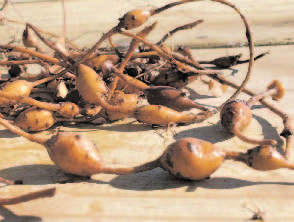 1 cup groundnut tubers, peeled and sliced
1 cup groundnut tubers, peeled and sliced
1 medium onion, chopped
2 carrots
1 stalk celery
1 tbsp. dried nettles
cayenne pepper
1 quart chicken or vegetable broth
Sauté garlic and onions in a skillet until tender. Add carrots, celery, and groundnuts and cook on medium heat about 10 minutes.
Transfer to a larger pot and add broth and seasonings. Cook on medium low heat 20-30 minutes.
Vickie Shufer
Muscadine Grape – September 27, 2020
(Vitis rotundifolia) - Vitaceae
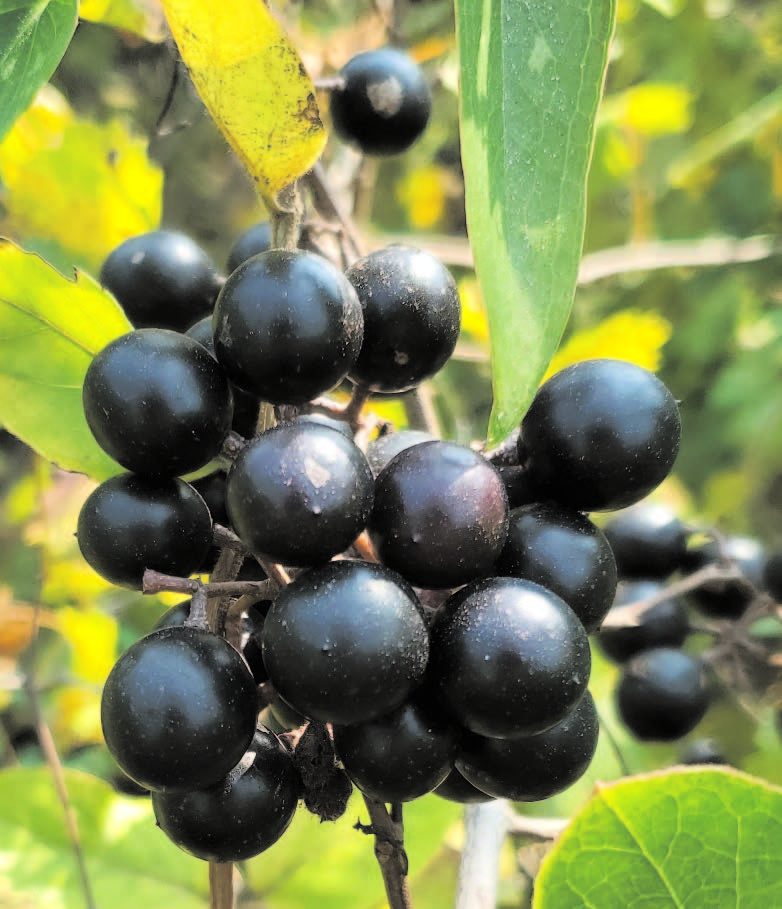 Muscadine grapes are the ancestor of cultivated grapes and grow from Delaware south to central Florida and cultivated as far west as east Texas and northward along the Mississippi River to Missouri (HerbClipTM Online, 2015). It is a vigorous, high-climbing vine with tendrils that may grow up to 100 feet in the wild. Leaves are somewhat heart-shaped with a V-shape at the base with deeply serrated margins. It has small, greenish flowers in the spring, followed by fruits that ripen in late summer and early fall, about the time the leaves start changing color. Grapes turn dark purple to black when ripe. Scuppernongs are lighter in color and are sometimes referred to as the blond muscadine.
Muscadine grapes are the ancestor of cultivated grapes and grow from Delaware south to central Florida and cultivated as far west as east Texas and northward along the Mississippi River to Missouri (HerbClipTM Online, 2015). It is a vigorous, high-climbing vine with tendrils that may grow up to 100 feet in the wild. Leaves are somewhat heart-shaped with a V-shape at the base with deeply serrated margins. It has small, greenish flowers in the spring, followed by fruits that ripen in late summer and early fall, about the time the leaves start changing color. Grapes turn dark purple to black when ripe. Scuppernongs are lighter in color and are sometimes referred to as the blond muscadine.
In addition to the muscadine grape, there are at least two dozen other species of wild grapes that occur in the United
States. They are easily recognized by their woody vines that climb high into trees, often at the edges of woods. Forked tendrils and heart-shaped leaves characterize the wild grapes. All are edible, but some are sweeter than others. Most grapes are sweet to eat straight from the vine and make excellent jelly, pies and wine. Since the fruits contain lots of natural pectin,jelly can be made without purchasing commercial pectin and honey can be substituted successfully for sugar.
Parts Used: Fruits, leaves
Taste: Fruits are sweet and sour; the pulp is sweet but the skin is sour. Leaves are bitter and astringent.
Health Benefits
Muscadine grapes are among the richest sources of antioxidants, especially ellagic acid and resveratrol, (M.D. News Special Edition, 2008). A puree of skins and pulp was found to be an excellent source of resveratrol, dietary fiber, essential minerals, high in carbohydrates, and low in fat and protein.
Antioxidants
Ellagic Acid: believed to be a cancer preventative
Resveratrol: a phytochemical that helps protect the plant from pests or diseases; reported to lower cholesterol and the risk of heart disease; cancer-fighting substance; found in grapes, leaves, skin, and seeds (M.D. News Special Feature, 2008).
Flavonoids – phenolic compounds
Anthocyanins: responsible for the red, purple, and blue hues; may contribute to the prevention of cancer, diabetes, and cardiovascular and neurological diseases (Konczak and Zhang, 2004).
References
M.D.News Special Edition, 2008. retrieved from https://www.cypressbendvineyards.com/media/1269/md-news-june-2008.pdf.
Konczak, I. and Zhang, W. (2004). “Anthocyanins – more than nature’s colours.” J. Biomed Biotechnol. Retrieved from https://www.hindawi.com/journals/bmri/2004/307613/.
Grape Crunch
Preheat oven to 350°F.
Granola Crust:
1/2 cup oats
1/2 cup nuts
1/2 cup flour
1/2 cup sugar
1/2 cup butter, softened
Mix butter with oats, flour, nuts, and sugar until crumbly. Press half the mixture evenly on bottom of buttered baking dish. Reserve remaining crumbs for topping.
Pour the cooked grapes over the oat mixture in the baking dish. Top with remaining oat mixture. Bake for 30-35 minutes.
Grape Filling:
3 cups muscadine grapes, seeds removed
1 cup sugar
3 tbsp. flour
Place grapes in saucepan. Add flour and sugar and bring to a gentle boil. Continue to cook for 15 minutes.
Vickie Shufer

Purslane – August 24, 2020
(Portulaca oleracea) - Portulacaceae
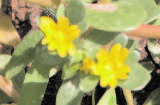
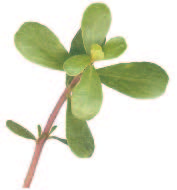 Purslane is a summer green, one that doesn’t emerge until later in the spring after the daytime temperatures climb into the 80s. Look for it in garden beds and edges of lawns where there is plenty of sunlight.
Purslane is a summer green, one that doesn’t emerge until later in the spring after the daytime temperatures climb into the 80s. Look for it in garden beds and edges of lawns where there is plenty of sunlight.
Purslane is easy to identify. It has thick, succulent leaves and reddish-purple stems that sprawl across the ground and forms clumps. Purslane is drought tolerant. It has adapted to growing in hot, sunny conditions by storing excess water in the leaves and stems.
Fleshy leaves are oval-shaped with rounded tips and smooth margins. Small, yellow flowers with five petals appear on bright, sunny mornings and are open for only a few hours before closing up. Following the flower is a seed capsule that releases numerous tiny black seeds.
Leaves and stems are edible with a mild, somewhat tart taste. Stems are tender and crispy and make a nice addition to salads or as a cooked green with potatoes or other vegetables. They can also be preserved by pickling or tincturing with vinegar.
Purslane is nutritive. According to Jim Duke (1997), it is the best leafy source of omega-3 fatty acids. Omega-3’s are essential fatty acids that can help prevent heart attacks by preventing blood clots that trigger it. The fresh greens also contain calcium and magnesium in a one-to-one ratio, which makes it most protective for the heart. Purslane also is an excellent source of vitamins A, C, and E.
References
Duke, J. A. (1997). The Green Pharmacy. Rodale Press: Emmaus, PA.
Purslane Pickles
1 pint washed and rinsed purslane stems and leaves
3/4 cup water
3/4 cup apple cider vinegar
2 tablespoons field garlic vinegar
1 tablespoon organic cane sugar
2 teaspoons sea salt
Pack the purslane in a pint jar. In a saucepan, combine the water, vinegar, sea salt, and cane sugar. Bring to a boil. Pour the brine over the purslane, making sure to submerge all the purslane under the brine. Seal the jar and place in the refrigerator for at least 3 days before eating.
Purslane-Tomato Salad
2 cups purslane leaves
3 Roma tomatoes
1 cayenne pepper
2-3 tbsp. chives
salt to taste
2-3 tbsp. garlic vinegar
Finely chop all ingredients. Add salt and pour vinegar over vegetables. Sprinkle chives on top. Chill and serve.
Poisonous Look-Alike
There is a poisonus look-alike. Spotted spurge (Euphorbia spp.) is another sprawling plant that grows in similar conditions as purslane. It also has reddish stems but the leaves are much smaller and not as succulent. When the leaves and stems are broken, it exudes a white, milky sap that is toxic.
Vickie Shufer

Linden , Basswood – May 27, 2020
(Tilia americana): Mallow Family – Malvaceae
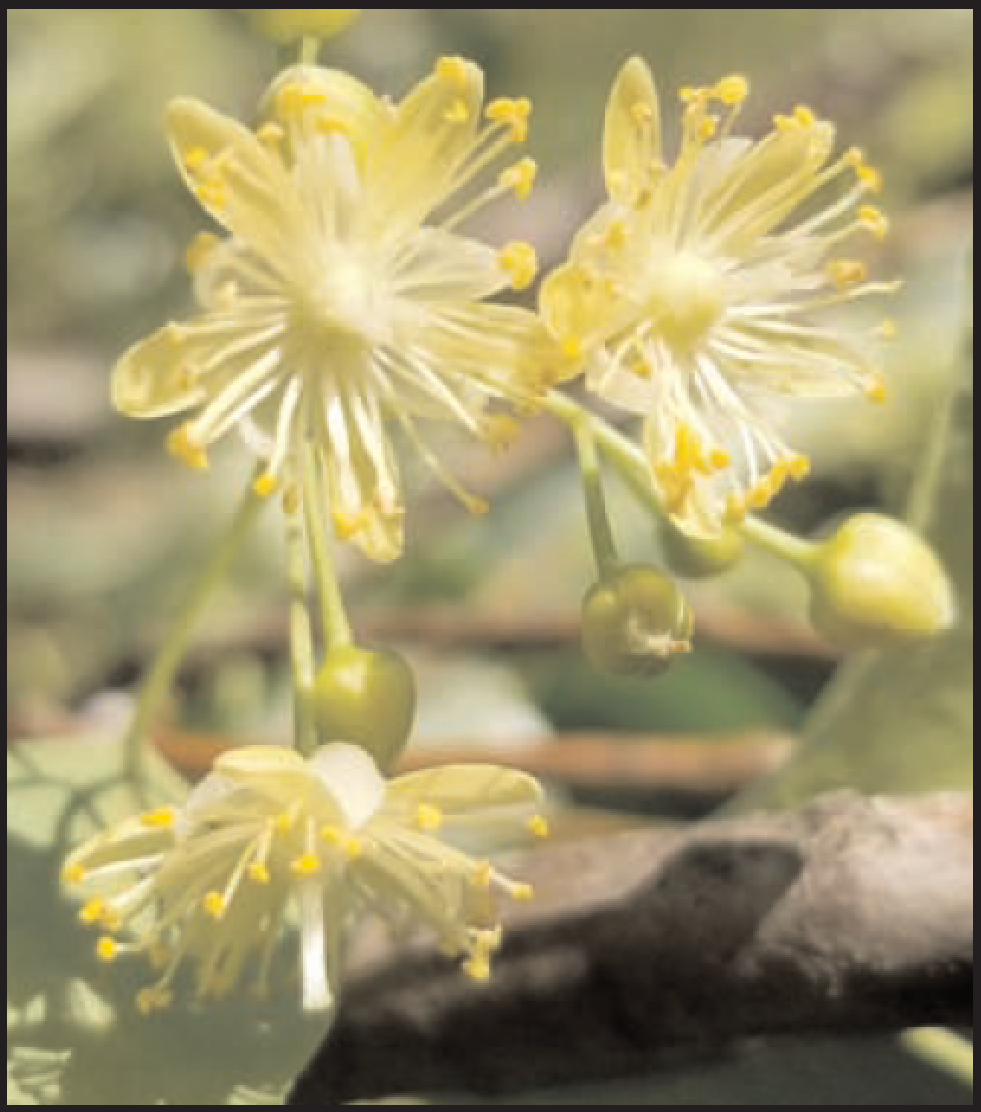 The smell of spring is in the air. Linden is in bloom. Also known as basswood, linden is a deciduous tree that is native to Virginia and one that I have always associated with as growing in the mountains. The leaves are large, somewhat heart-shaped with lop-sided bases and sharply toothed margins. They were easy to pick out when hiking up the mountain trails. Since I usually did my mountain hiking in the summer, I always missed the flowering season, which is in the spring.
The smell of spring is in the air. Linden is in bloom. Also known as basswood, linden is a deciduous tree that is native to Virginia and one that I have always associated with as growing in the mountains. The leaves are large, somewhat heart-shaped with lop-sided bases and sharply toothed margins. They were easy to pick out when hiking up the mountain trails. Since I usually did my mountain hiking in the summer, I always missed the flowering season, which is in the spring.
And then, one day, I heard a Norfolk resident casually mention the linden trees blooming on his street. I had to go see for myself. The leaves were smaller than what I had seen in the mountains, but otherwise the shape was the same, and more so, the flowers.
It was my first experience with the flowers and they were heavenly, both in appearance and in smell. I was able to locate them by their smell. A sweet, almost lemon-lime scent filled the air around them. The flowers are small with five yellow petals and many stamens. Most distinctive is the leaf-like bract, attached to the flower stalk, for about half its length. The flowers, with the bracts, make a tasty, refreshing beverage. The flowers produce lots of nectar and is great for attracting bees, giving it the name “The Bee Tree” (Eat the Weeds).
Linden is more than just a tasty beverage. It is also medicinal. Linden is a relaxing nervine that helps to soothe frayed nerves at the end of the day and to relieve muscle tension by loosening tight muscles. It is a great herb to use for stress, tension, and insomnia.
Linden is a cooling herb and is also useful for fevers and colds. It contains natural mucilage and is soothing to the respiratory pathways. Linden is a diaphoretic and diuretic and was traditionally used for feverish colds, flus, and other respiratory infections (Foster and Duke, 2000).
References
Eat the Weeds. Retrieved from www.eattheweeds.com/basswood-tree-linden-lime-tree. Foster, S., and Duke, J. A. (2000). Eastern/central medicinal plants and herbs. Houghton Mifflin Company: New York, NY.
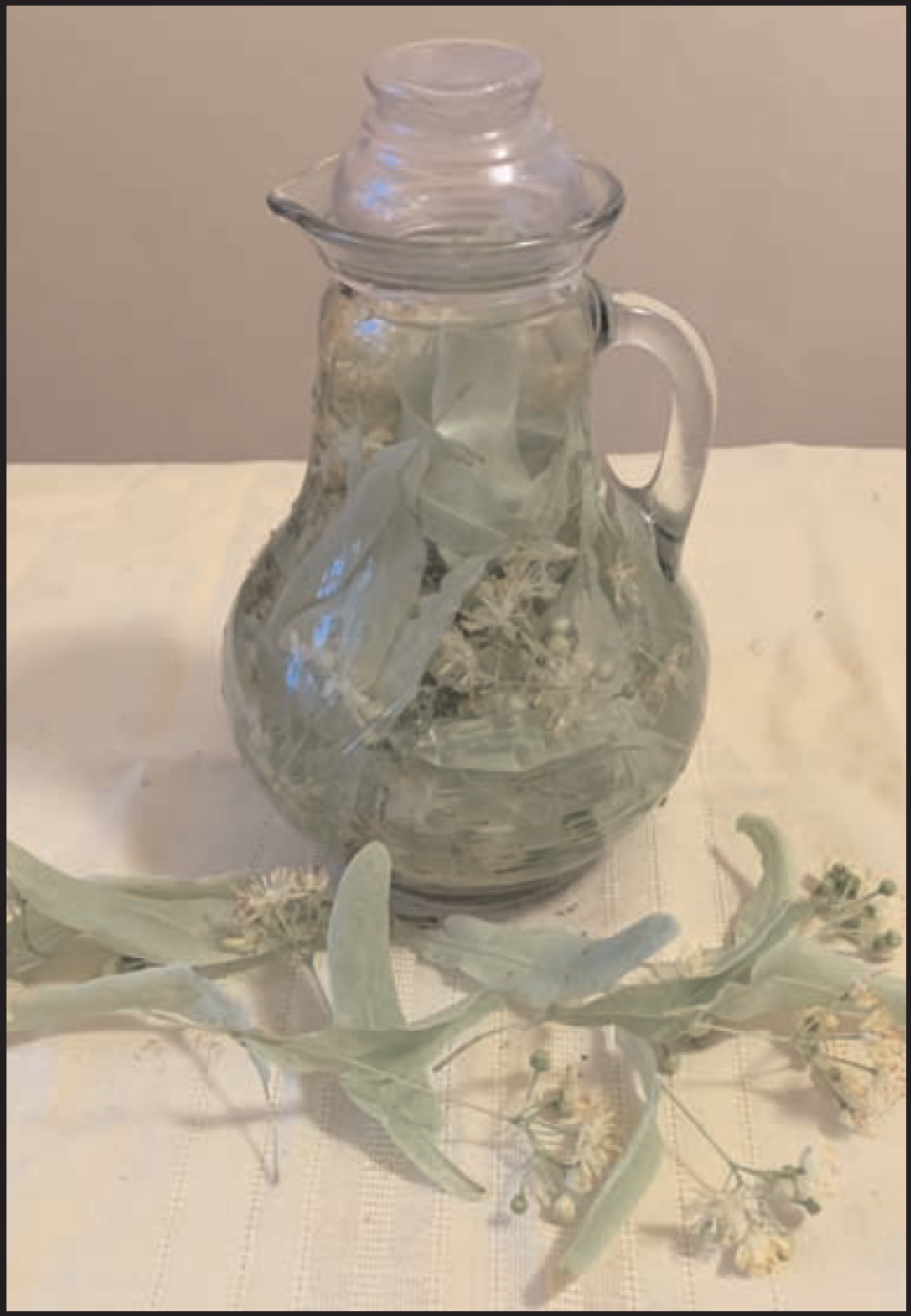 Linden Tea
Linden Tea
Linden makes an excellent tea, either as a cold water infusion or as a hot tea. A cold infusion takes longer but has a fresher, more flowery taste. A hot infusion is quicker.
For a cold water infusion, pack a quart jar with linden flowers (approximately one ounce), fresh when available. Cover the flowers with cold water and let it sit overnight. Strain the water from the flowers and place the flowers in a saucepan for a second brewing. Add two cups water, bring to a boil. Remove from heat, cover and let steep for several hours. Strain and drink. Sweeten to taste.
For a hot infusion, pour hot water over 2-3 tablespoons linden flowers. Steep 10 minutes or longer, strain, and drink. Sweeten to taste.
Cold Care Linden Tea
2 parts linden flowers
1 part lemon balm
1 part pineapple
sage elder flower syrup to taste, or honey
Pour hot water over 2 tablespoons herb mix and steep.
Vickie Shufer

Chickweed – January 17, 2020
(Stellaria media) - Caryophyllaceae
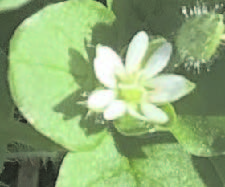 As I walk out the back door, I am confronted with chickweed, one of the most common herbs in my yard right now. And it’s blooming.
As I walk out the back door, I am confronted with chickweed, one of the most common herbs in my yard right now. And it’s blooming.
For many, it might be considered invasive. It’s coming up in my flowerpots, garden beds, in my pathways, and all over the yard, forming a thick mat in many places. For me, I see an abundance of food and medicine.
I will be using it in my salads as an edible green, making tinctures with organic apple cider vinegar, and infusing it in oil to make healing salves.
Chickweed loves the cool, moist weather that we have been having. I pull it up by the roots and place it in a bowl with water in the bottom. It continues to grow. It makes it convenient to pick a few leaves each day to add to soups, salads, or vegetables.
Chickweed is easy to recognize at this time of year. It is a weak-stemmed plant that comes up in late fall in southeastern Virginia and grows through the winter, sprawling across the ground or draping over the pot it has invaded. Leaves are small and grow in pairs on the stem. At the ends of the stems are the flowers with five white petals that are deeply notched, giving them the appearance of having 10 petals.
Chickweed is both food and medicine. It is high in many nutrients, including calcium, phosphorous, magnesium, potassium, and vitamin C. As a food, chickweed can be eaten raw in salads, in pesto or herb spreads, chopped and infused with water as a tea or added to soups.
Chickweed has a reputation of being a weight-reducing herb. According to Matthew Wood (The Earthwise Herbal, Volume 1: A Complete Guide to Old World Medicinal Plants, 2008), it “regulates water levels and drives off excess dampness and fats.”
Chickweed’s chemical constituents include saponins, coumarins, flavonoids, and triterponoids. Energetically, chickweed is cooling. As a demulcent, it is soothing and protects irritated or inflamed tissue.
Medicinally, it can be used as an antirheumatic, vulnerary, and emollient (David Hoffman, Medical Herbalism, 2003).
According to Rosalee de la Floret, chickweed is a mild expectorant and can be used to treat coughts due to dry and irritated lungs and to move mucus stuck in the lungs.
Inflamed skin conditions can be relieved with a salve or poultice made from chickweed.
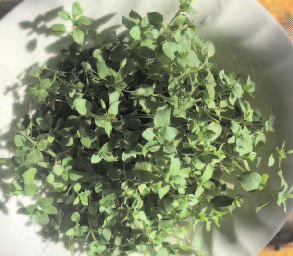 Chickweed Vinegar
Chickweed Vinegar
an excellent way to extract minerals from greens
2 cups chopped chickweed
2-3 cups organic apple cider vinegar (enough to cover the herbs)
1 tbsp. honey, optional
Place the herbs in a jar and cover with vinegar.
Cover with a plastic or glass lid or use parchment paper between the vinegar and a metal lid. Store in a pantry for 2-4 weeks. Strain and add to salads, cooked greens, or vegetables.
Vickie Shufer

Wild Black Cherry – December 2, 2019
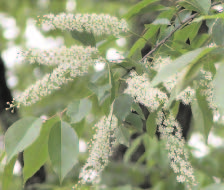 As I stepped outside that December morning, I felt the coolness of the air
and knew we had gotten a frost. It wasn’t the first. The first frost was in
mid-November. I had been waiting for a frost.
As I stepped outside that December morning, I felt the coolness of the air
and knew we had gotten a frost. It wasn’t the first. The first frost was in
mid-November. I had been waiting for a frost.
With the onset of winter, I wanted to be prepared in the event I may get a cold, or worse, a nagging cough. Black cherry bark is one of the few herbs that have antitussive properties, that is, they suppress the cough.
With the cooler days approaching, the leaves on the black cherry tree in my yard had gone from green to yellow. Now was the time to harvest the wild cherry bark, according to some sources. Some say in the spring. According to Matthew Wood (2009), spring and fall is when it should be harvested. This is when the sugar content is higher.
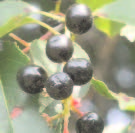 But Jim Duke harvested
his after the frost, so I have decided to do the same. He also liked to tincture
it while it was fresh although it is also dried and tinctured, which I have done
in the past. But I wanted to use it fresh this time.
But Jim Duke harvested
his after the frost, so I have decided to do the same. He also liked to tincture
it while it was fresh although it is also dried and tinctured, which I have done
in the past. But I wanted to use it fresh this time.
I selected several small branches that were hanging low from the tree nearest my house. After peeling the bark, I weighed out three ounces of the peeled bark and added one quart of water and brought it to a gentle boil. Lowering the heat, I continued to gently boil the bark to half the water content.
The water turned a deep red with an almond-like smell. I strained out the bark, added one-ounce simple syrup, let it cool, and then added 4 ounces of grain alcohol to the liquid to preserve it. This has now been stored in my pantry for myself and others for that time if/when it is needed.
Vickie Shufer

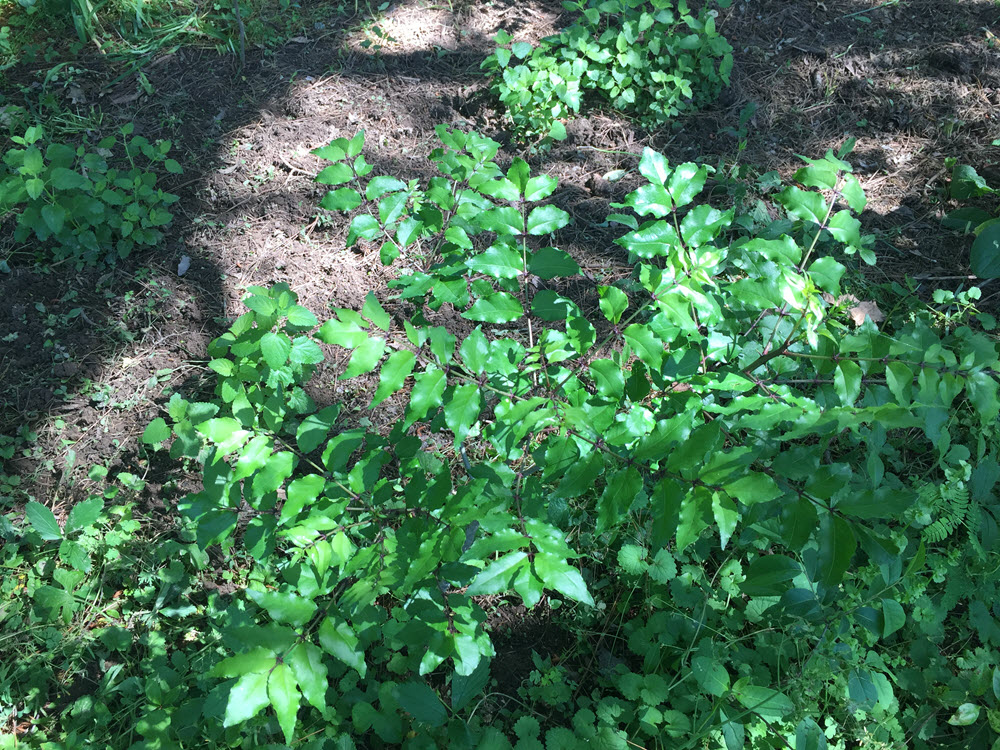 Sap is Rising – May 7, 2019
Sap is Rising – May 7, 2019
In the spring, when the trees begin sending out new growth, nutrients from the roots are being transported to the leaves and branches via the sap. This is the tim to harvest branches for the inner bark which contains their nutrients.
Peeling the bark of black willow (Salix nigra) and prickly ash (Zanthoxylum clava-herculis) has been my primary focus for the past several weeks. The bark easily slips off the branches in long strips and is then dried for a few days. Cutting it into small pieces and then decocting it as a tea is the first step in the medicine-making process.
Prickly Ash
(Zanthoxylum clava-herculis)
Citrus Family – Rutaceae
Prickly ash is an aromatic, small tree with spreading branches and stout spines on the trunk. Also known as the toothache tree, the toothed projections on the trunk fits with the “Doctrine of Signatures” which states that herbs that have parts that resemble parts of the body can be used to treat those parts. In this case, the bark has a numbing effect on the gums and stimulates the salivary glands. The leaves are compound with 5-13 leaflets, often with paired spines at the base. When crushed they emit a citrus smell. Small, yellow-green flowers develop in branched clusters at the ends of twigs in the spring. Biting into the flower buds is similar to biting into the peel of an orange.
Parts Used
inner bark, fruit follicles
Taste
The taste is pungent and warming. It is stimulating and diffusive (Wood, 2011).
Constituents
Prickly ash bark contains the alkaloid chelerythyrine with antibacterial and and anti-inflammatory activity (Foster and Duke, 2000). It also contains coumarins, resins, and tannins (Hoffman, 2003).
Traditional Uses
Prickly ash has traditionally been used to treat toothache, as well as rheumatic conditions, Raynaud’s disease and to stimulate the circulatory system (Foster and Duke, 2000).
Wildlife Uses
Host plant for the giant swallowtail butterfly.
References
Foster, S. and Duke, J. (2000). A field guide to medicinal plants and herbs. Houghton Mifflin Company:New York, NY.
Hoffman, D. (2003). Medical herbalism: The science and practice of herbal medicine. Healing Arts Press: Rochester, VT.
Wood, M. (2011). The earthwise herbal: A complete guide to old world medicinal plants. North Atlantic Books: Berkeley, CA.
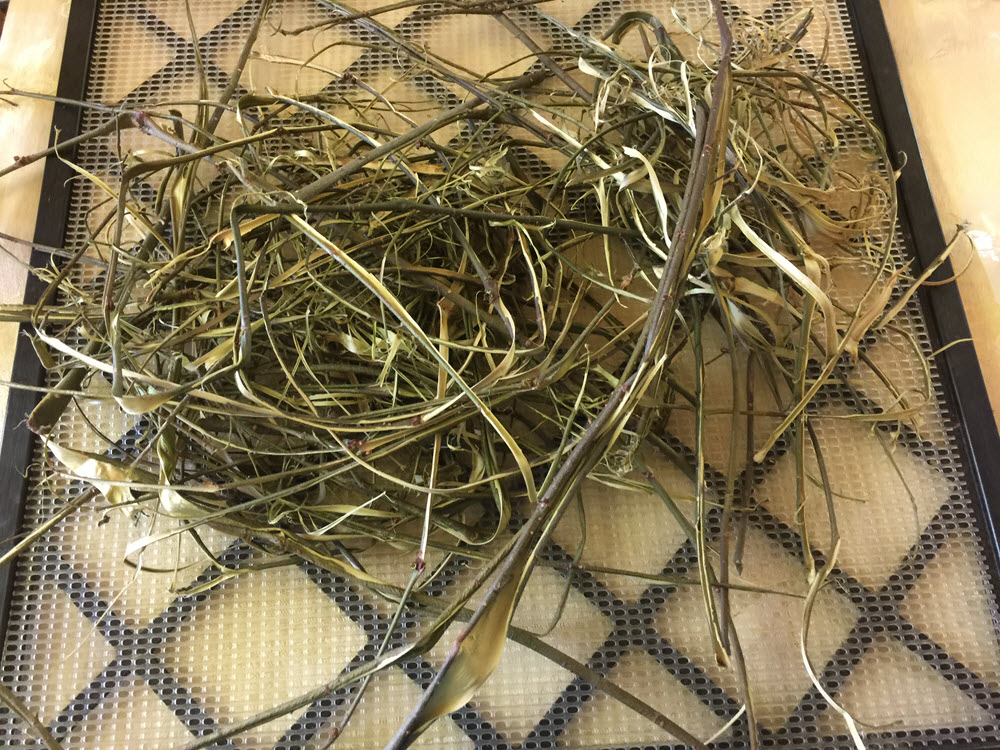 HERBAL SEASONING
HERBAL SEASONING
Zest!!!
a spicy blend of black pepper, turmeric, and prickly ash
1 oz. black peppercorns
1⁄2 oz. turmeric
1⁄8 oz. prickly ash seed follicles
Grind herbs to a powder using a coffee grinder, blender, or food chopper. Sprinkle on eggs, vegetables, meat, and fish for a spicy, tingling flavor.
Black Willow Bark Drying

Wild Ginger (Hexastylis arifolia) - January 29, 2019
Birthwort Family – Aristolochiaceae
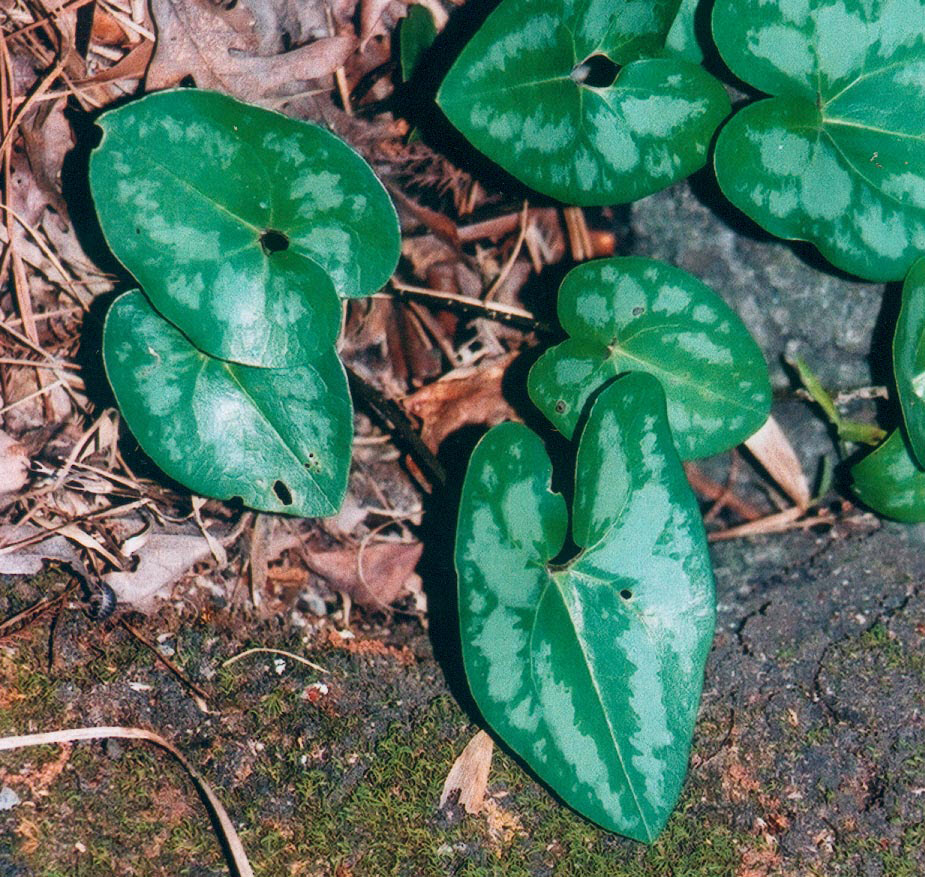 Growing close to the ground with leaves that are evergreen, wild ginger is easy to spot during the winter months in mature, hardwood forests. The heart-shaped leaves are pale, whitish-green with dark green veins and margins. At the base of the plant, the flower bud is forming that will open early in the spring into a small, maroon to brown cup-shaped flower with three petals, coming together at the base. The flowers are often described as resembling little brown jugs, another common name. To see the flowers, lift the leaves carefully from around the plant. Because the flowers are on the ground, they rely on ants or beetles to pollinate them.
Growing close to the ground with leaves that are evergreen, wild ginger is easy to spot during the winter months in mature, hardwood forests. The heart-shaped leaves are pale, whitish-green with dark green veins and margins. At the base of the plant, the flower bud is forming that will open early in the spring into a small, maroon to brown cup-shaped flower with three petals, coming together at the base. The flowers are often described as resembling little brown jugs, another common name. To see the flowers, lift the leaves carefully from around the plant. Because the flowers are on the ground, they rely on ants or beetles to pollinate them.
The plants spread underground by horizontal stems just beneath the surface, and are fairly easy to dig. Use kitchen scissors to snip off small sections of the root and then replant. This way it continues to spread and you haven’t hurt the plant.
Uses
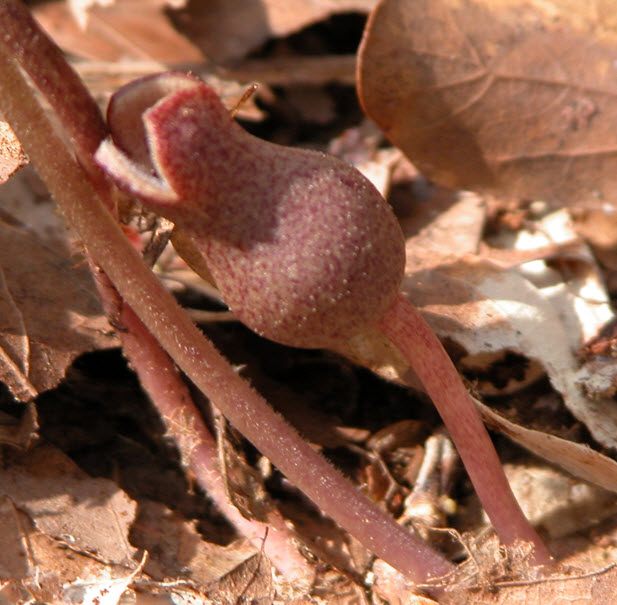 Leaves and roots have an aromatic smell similar to sassafras due to the safrole contained in them. An extract from the leaves and roots has been used as a flavoring. The roots can be made into a syrup. Traditionally, root and leaf infusions were used to treat heart and lung conditions (Plant Database, Lady Bird Johnson Wildflower Center).
Leaves and roots have an aromatic smell similar to sassafras due to the safrole contained in them. An extract from the leaves and roots has been used as a flavoring. The roots can be made into a syrup. Traditionally, root and leaf infusions were used to treat heart and lung conditions (Plant Database, Lady Bird Johnson Wildflower Center).
Wild ginger is in the Birthwort family (Aristolochiaceae) and has been associated with childbirth by mountain women who used the root during pregnancy to ease the aches and pains (Martin, 1984). It has also been used medicinally to treat coughs, asthma and other ailments and by women during childbirth to ease the aches and pains. The Menominee and Chippewa would eat the roots or boil them to make a tea to help digestion (Moerman, 1981). The tea was also used to treat coughs, colds, sore throats, promote sweating and as an expectorant (Foster and Duke, 2000). The Catawbas used Hexastylis arifolia for heart pains (Vogel, 1970). The Canadian Indians drank an infusion of Asarum canadense for heart palpitations (Weiner, 1972). Edgar Cayce recommended ginger for intestinal disorders, poor digestion and lymph circulation, often in a formula with other herbs, including wild ginseng (The Cayce Herbal, Meridian Institute).
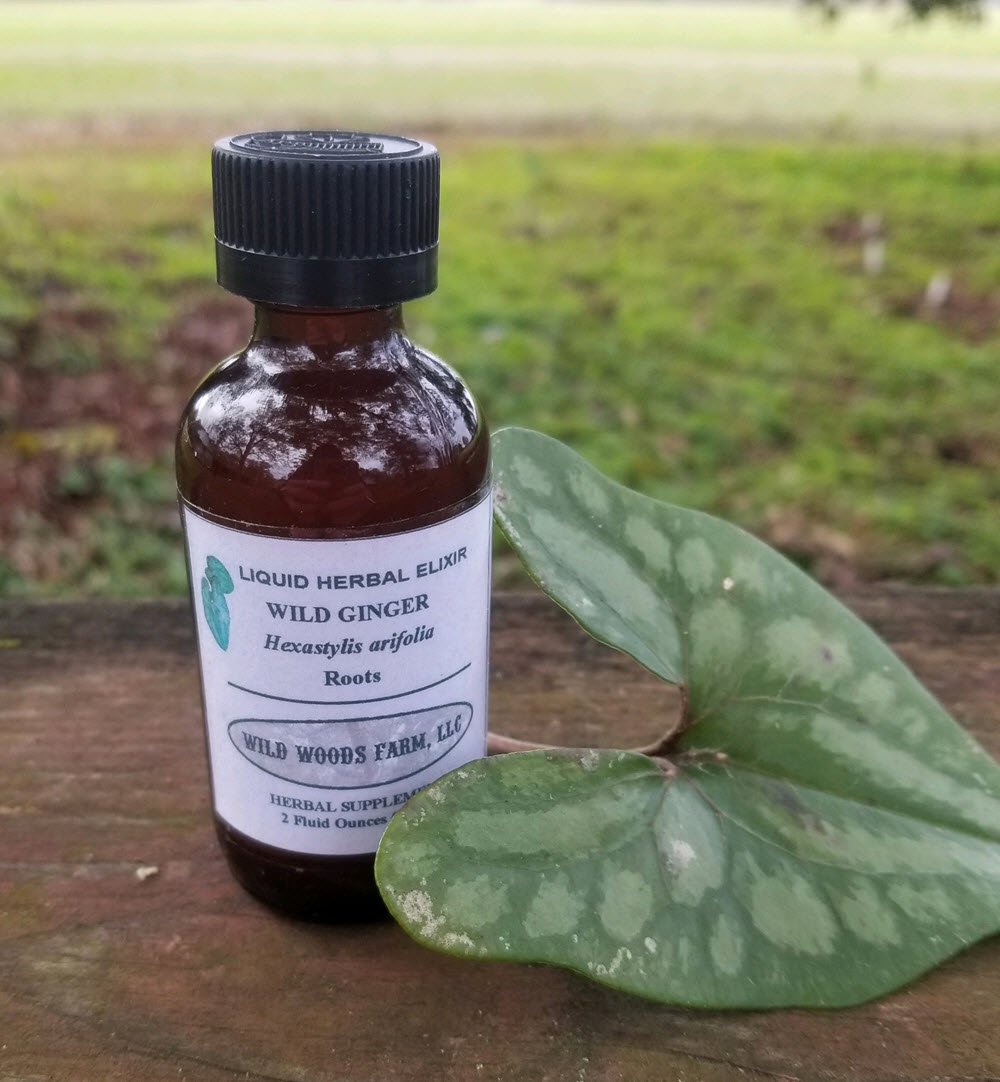 Wild Ginger Syrup
Wild Ginger Syrup
3 oz. (90g) wild ginger roots, chopped
1/4 c. sugar
3/4 cup water
Combine sugar and water. Bring to a boil. Reduce heat, add chopped ginger roots and reduce heat Simmer 20-30 minutes.

Passionvine (Passiflora incarnata) - November, 2018
Passifloraceae
The last of the fall fruits have been ripening and are ready
to pick. They are a common sight at the edges of forests, especially on the
southern side where sunlight is plentiful, in late summer and into the fall. The
vines have been growing all summer, producing large, colorful flowers followed
by the green fruit, which looks like a small watermelon. When the fruits get
soft and start turning yellow and wrinkly, they are ready to pick. If you
squeeze them, they may pop – hence the common name, Maypop.
Passionflower is a native herbaceous vine that is common in the southern states. It is a fast growing plant that climbs over fences, trees, shrubs or anything that will support it. It has large, deeply lobed leaves with tendrils in the leaf axils. The large, whitish-purple flowers are the most distinctive characteristic and appear during the summer months. A fringe of thread-like filaments grows out from the base of the petals and rests on them. Following the flowers are the fruits that are initially green and then turn yellow as they ripen.
Parts Used and Preparation
aerial parts – leaves, stems, flowers; leaves, stems, and flowers, fresh or dried, can be used as a tea or tincture
fruits, fresh – eaten raw, including the seeds, or juiced
Uses
Traditionally, the leaves, stems,
and flowers of passionvine have been used as a sedative and nervine to treat
nervous tension, anxiety and insomnia (Duke, 1997). It is currently used to
treat symptoms associated with stress, including sleeplessness, GI disturbance
caused by stress, anxiety disorder, and to reduce menopausal anxiety (Kuhn and
Winston, 2008).
The fruits are nutritive and can be eaten raw when ripe or made into juice. They, have a sweet and sour taste, almost like a sweet grapefruit.
Constituents
The sedative activity may be attributed to flavonoids that have anxiolytic actions that relieve anxiety. Alkaloids, including harmine, may help in decreasing depression (Skidmore-Roth, 2010).
Wildlife Uses
Flowers are a nectar source for numerous pollinators while the plant is the host plant for the fritillary butterfly. Fruits are eaten, by raccoons, deer, and other mammals.
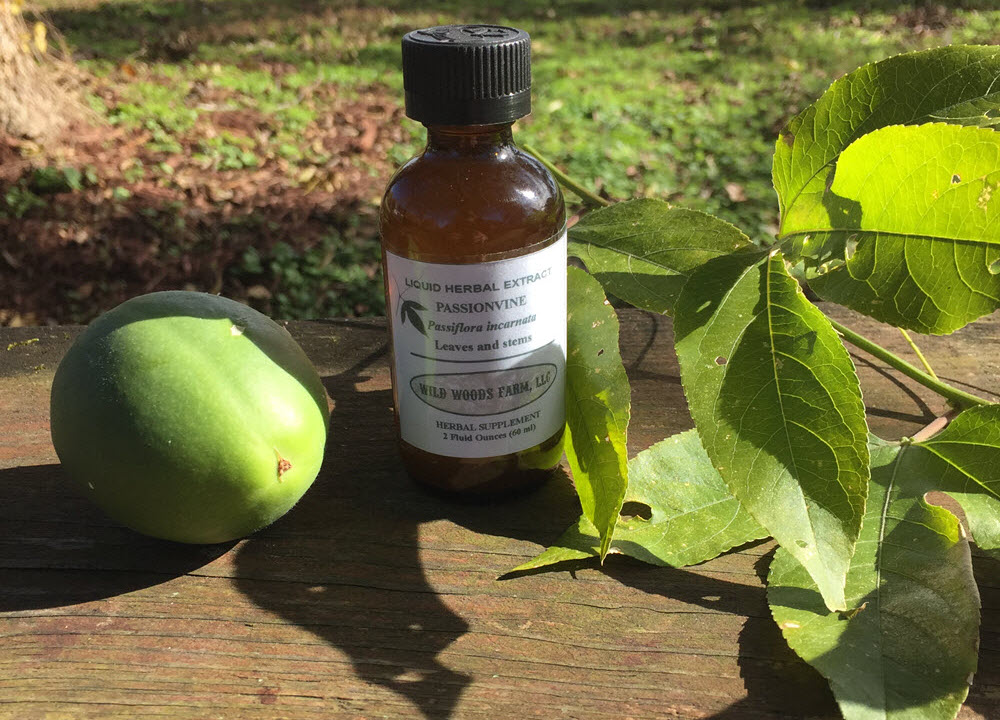 References
References
Duke, J. (1997). The Green pharmacy. Rodale Press: Emmaus, PA.
Kuhn and Winston. (2008). Herbal therapy & supplements: A scientific and traditional approach. Wolters Kluwer/Lippincott Williams & Wilkins: Philadelphia, PA.
Skidmore- Roth, L. (2010). Herbs and natural supplements (4 th
Ed.). Mosby Elsevier: St. Louis, MO. erol.

 Nut Pickin’ - October, 2018
Nut Pickin’ - October, 2018
The cooler autumn air brings with it a change in leaf color accompanied by nuts maturing and dropping to the ground. Most nuts are sweet, high in protein, and can be used as a substitute for meat in the diet. They are also rich in unsat- urated fats that give them a high caloric value but no cholesterol.
True nuts are characterized by a single seed, a hard shell, and a protective husk that can take different shapes. Common nuts in the eastern U.S. include hazelnuts, beechnuts, walnuts, hickory, and chestnuts. Hazelnuts have a leafy outer husk while chestnuts have needle-sharp spines surrounding the shell.
Acorns have a cap and a beechnut has a triangular husk with weak spines. The
outer husk of a black walnut looks like a smooth, green ball whereas the hickory nut is ribbed. The ribs split open when the hickory nut matures to release the shell. Walnuts drop to the ground with the outer husk intact.
Black Walnuts (Juglans nigra)
Nuts have been referred to as “brain food” due to their serotonin content. According to Jim Duke, the black walnut, which looks like a brain, is the best source of serotonin. This is befitting of the “Doctrine of Signatures” which is based on “like cures like” and that the shape or color of a plant indicates its use. In this case, the brain-shaped nut is the best source of brain food.
Black walnuts are found in the eastern half of the United States except for the northern border. They are large trees with compound leaves consisting of 7-19 toothed leaflets that turn yellow in autumn. The fruit is a thick-shelled nut with ridges enclosed in a green husk that does not split open at maturity.
Walnuts begin dropping to the ground in mid-September and should be gathered soon after falling. If they remain on the ground for more than a few days, they become infested with maggots and turn black. The green outer hull can be tinctured and used to treat parasites and ringworm.
Removing the husk without getting stained can be tricky. Wearing gloves is a must unless you don’t mind sporting around hands stained yellow-brown for several weeks. This stain can be used as a dye or to stain wood.
The easiest way to remove the husks is to place the walnuts in the driveway and run over them in your car. Break away the hulls and rinse the nuts in a bucket of water, removing any that float. Spread in a single layer on mats to dry. Once dry, they can be stored in a cool, dry place until needed.
The shells of black walnuts are thick and hard with deep ridges. The best way to remove the nutmeat is with a hammer or a hard rock and a concrete block. Position the walnut on its side and give it a good firm whack. You may have to practice a bit to develop the right technique for removing the nutmeat in large pieces.
A pound of walnuts will yield about a cup of shelled nutmeats. Place the nutmeats in a food chopper or blender for use in cookies or cakes. Due to their high caloric value and the strong flavor, they should be used in small quantities.
References
USDA Forest Service. Retrieved from https://www.fs.fed.us/wildflowers/ethnobotany/food/nuts.shtml.

 Nut-Berry Oatmeal Cookies
Nut-Berry Oatmeal Cookies
1/2 cup butter
1 cup flour
1 cup organic cane sugar
2 cups rolled oats
1 tsp vanilla
1/4 cup chopped walnuts
2 eggs
1/2 cup wild blueberries
Cream together butter and cane sugar until fluffy. Stir in vanilla and add eggs, beating after adding.
Add flour, stir in oats, nuts, and blueberries.
Drop by teaspoonfuls on greased baking sheet and bake at 350 for 10- 15 minutes.
Sumac - September, 2018
Sumac – Rhus copallinum, R. glabra, R. typhina
Sumac Family – Anacardiaceae
Description and Habitat:
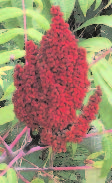 Sumac is a deciduous shrub that grows on the sides of
roads, interstates, fields, anyplace where there is an
opening of light or disturbed soil. It sends out
horizontal underground stems that sprout and form
colonies. Although it is a native, it can sometimes be
invasive, especially in a yard or garden.
Sumac is a deciduous shrub that grows on the sides of
roads, interstates, fields, anyplace where there is an
opening of light or disturbed soil. It sends out
horizontal underground stems that sprout and form
colonies. Although it is a native, it can sometimes be
invasive, especially in a yard or garden.
Sumacs can be divided into two groups: poison sumac and non-poison sumac. The poison sumac (Toxidendron vernix) has white berries that hang in loose clusters while the non-poison sumac (Rhus spp.) has red, tightly clustered berries. The poison sumac, which fortunately is a lot less common than the others, can cause a contact dermatitis reaction, similar to poison ivy, in some people. Large, compound leaves that turn flaming red in the fall, are characteristic of both groups.
Botanical Uses
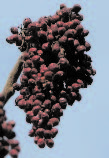 All species that bear red fruits can be used to make a tart, lemonade-like beverage. Fruits are covered
with bright red hairs that are tart with malic acid. They also contain ascorbic acid (vitamin C)
and tannic acid. They can be dried and ground into a reddish powder by placing them in a blender or
coffee grinder. Strain out the seed and keep the powder. The dried berries are a traditional Middle
Eastern seasoning used primarily on chicken and fish. The powder can also be used to add a tart flavor
to any recipe.
All species that bear red fruits can be used to make a tart, lemonade-like beverage. Fruits are covered
with bright red hairs that are tart with malic acid. They also contain ascorbic acid (vitamin C)
and tannic acid. They can be dried and ground into a reddish powder by placing them in a blender or
coffee grinder. Strain out the seed and keep the powder. The dried berries are a traditional Middle
Eastern seasoning used primarily on chicken and fish. The powder can also be used to add a tart flavor
to any recipe.
The secret to a good tasting sumac drink, or sumac ade as some call it, is in the fruit. Quality fruits produce quality results. With sumac, it’s watching for the right moment, when the fruits turn glowing, bright red, ideally, before a rain. After a few days, they will lose that glow and start dulling in color. Breaking open a cluster will reveal hundreds of tiny insect eggs around the stems, maybe even a few caterpillars. It’s best to get the fruits before they reach this stage. When ripe, the end branches snap off easily.
Sumac ade can be made by infusing the berries in either hot or cold water. A cold water infusion has a fruitier taste but has to steep for a longer period of time. It has a lemonade-like flavor and is a refreshing drink to have on a hot, summer afternoon. The juice can also be used to make jelly, pies or as a substitute for lemon juice.
Traditional Uses
Sumac was known and used by the American Indians before the settlers arrived. Roots, bark, leaves and berries were all used by various tribes for a multitude of purposes. Berries were soaked in water to make a beverage, and the dried berries were ground into flour for a mush or to add to soup. Among the Delaware, sumac was mixed with tobacco and smoked. The Iroquois peeled the young shoots and ate them raw. Among the Potawatomi, the leaves were steeped to make a tea that was used as a gargle for sore throats. Berries were also used by other tribes to make a tea for sore throats and colds (Erichsen-Brown, 1979).
Sumac is also a source for dyes. Black, brown, green and yellow can be obtained from the roots, leaves, bark and berries. Ink was made from the bark and berries.
Wildlife Uses
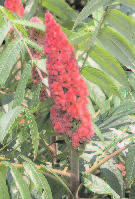 The fruits of sumac remain on the plants well into the winter, offering a source of food for
wildlife when other foods are scarce. Several gamebirds rely on sumac as a winter food source
as do some of the songbirds which winter in the north. Dense thickets provide cover for small
mammals, deer, and birds. Deer and rabbits browse on the bark and twigs.
The fruits of sumac remain on the plants well into the winter, offering a source of food for
wildlife when other foods are scarce. Several gamebirds rely on sumac as a winter food source
as do some of the songbirds which winter in the north. Dense thickets provide cover for small
mammals, deer, and birds. Deer and rabbits browse on the bark and twigs.
References
Erichsen-Brown, C. (1979). Medicinal and other uses of North American plants. New York, NY: Dover Publications, Inc.
Foster, S. and Duke, J. A. (2000). Medicinal plants and herbs of eastern and central North America. New York, NY: Houghton Mifflin Co.
Martin, A.m Zim, H. S., Nelson, A. L. (1951). American wildlife and plants: A guide to wildlife food habits. New York, NY: Dover Publications, Inc.
© Copyright Wild Woods Farm. All Rights Reserved.
Designed and maintained by Evolving Web Creation at evolvingwebcreation.com
